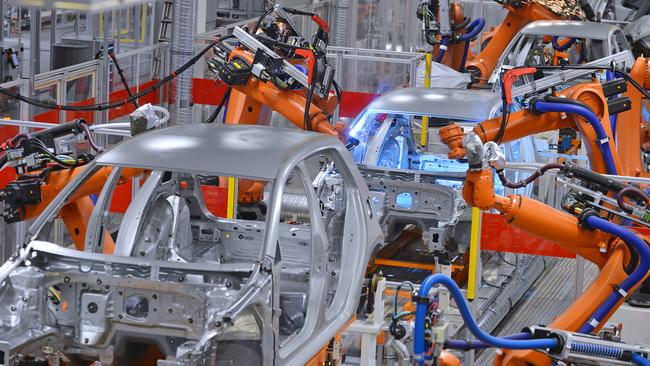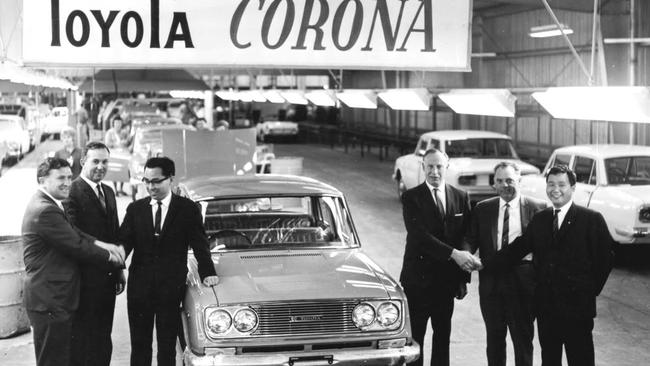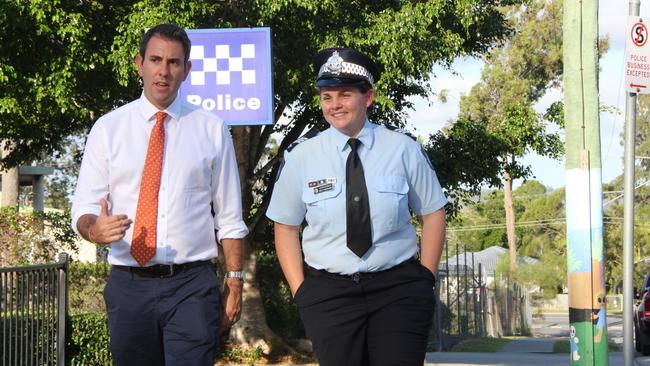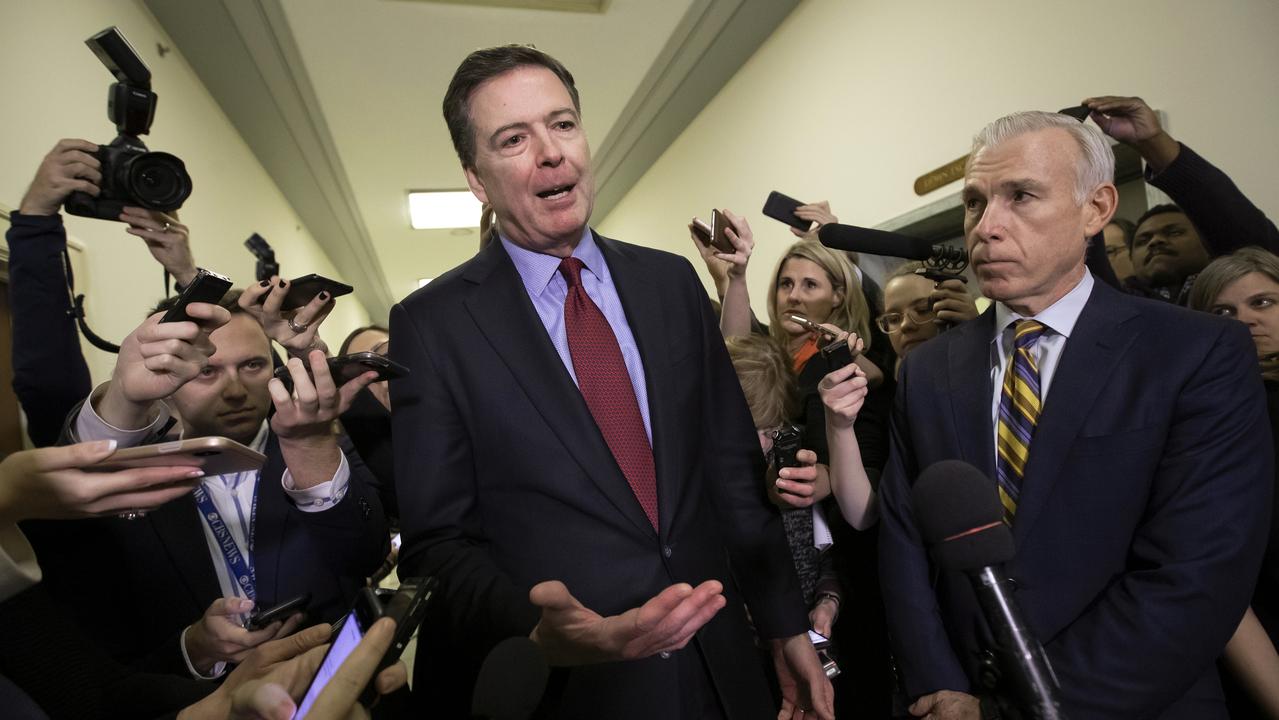
Let’s start this discussion with the wheel. People first used it as a turntable to mould clay into pots more than 5000 years ago in ancient Mesopotamia. Then some bright spark thought to turn the thing on its side. An axle was slung between two wheels and guess what: along came the cart. In that instant, the future of work changed.
The Bronze Age gave way to iron and steel, engines replaced horsepower, and now robots and super-smart machines can do all kinds of jobs faster and better than a flesh and blood worker could ever manage.
The point is, people have been adopting and adapting to change for as long as civilisation has existed. But tell that to the 2600 Toyota staff who lost their jobs this week when the company’s Melbourne factory closed, and the 966 Holden workers who are in the firing line at the Elizabeth plant in Adelaide, which shuts on October 20, to bring down the curtain on seven decades of carmaking in this country. Or to the voters who constantly bail up Labor frontbencher Jim Chalmers, worried that globalisation or a robot will eat their jobs as well.
“It’s not a mainstream issue, it’s the mainstream issue,” says Chalmers, who cut his teeth in politics as an adviser to former treasurer Wayne Swan before becoming finance spokesman under Bill Shorten.
“Technological change has a huge upside but we can’t dismiss people’s very real concerns about where or whether they fit into an economy dominated by machines. This is the defining anxiety that people have about their own work and the jobs their kids and grandkids will do.”
This is no longer an esoteric conversation conducted in the dusty halls of academe or between the talking heads on the ABC’s Q&A arguing whether it was the wheel or gunpowder, the printing press, electricity or the smartphone that changed life more.
Donald Trump harnessed the anger of Middle America at the automation and offshoring of manufacturing and rode it all the way to the White House by promising to bring back jobs that probably are gone for good.
In New Zealand, Jacinda Ardern put her “future of work project” front and centre of an election campaign that revived the opposition Labour Party’s fortunes, taking it to the cusp of an unexpected victory on September 23 (negotiations are dragging on with balance-of-power holder Winston Peters over who between Ardern and Bill English will govern, with the Acting Prime Minister in the box seat).
Chalmers’s offering is a thought-provoking book, Changing Jobs, co-authored by former NBN Co chief executive Mike Quigley. In it, they set out the challenges of maintaining employment in the new machine age as well as ideas for managing the social impact of automation. Chalmers says the issue will be central to the ALP’s pitch to voters at the next election. “I think all the colleagues are thinking pretty deeply about this area because for the Labor Party it is sort of a new frontier,” he says.
The parameters of the debate are far from settled. People are like frogs in a boiling pot, immersed in the changes to work that are taking place around them, unaware of the danger or unable to resist while it creeps up. Australian-born mathematician Michael Osborne teamed up with fellow Oxford University researcher Carl Frey, an economist, in a benchmark 2013 study that predicted up to 47 per cent of jobs in the US were at risk of being taken over by computers or robots.

Using similar modelling for Australia, a team led by University of Sydney professor Hugh Durrant-Whyte predicted that 40 per cent of current Australian jobs had a probability of greater than 70 per cent of being computerised or automated within the next 10 to 15 years.
There is general agreement that less-educated workers will bear the brunt, but that doesn’t mean a white collar gets you off the hook: while Osborne and Frey found that salary and education level are inversely related to the susceptibility of a job to machine replacement, advances in artificial intelligence and deep learning technology increasingly will put professional occupations in the frame, from lawyers to architects and medical radiologists who interpret X-rays.
The upside for those of us in the pot is that new studies have forecast lower job losses through automation: 9 per cent for the US in the case of an investigation for the OECD led by researcher Melanie Arntz and 5 per cent globally according to a report by the McKinsey Global Institute in January.
Chalmers favours the approach of his one-time colleague Andrew Charlton, who advised Kevin Rudd on economic policy when he was prime minister.
In August, Charlton’s consultancy firm, AlphaBeta, released an important report describing how all jobs would change, not just a select few.
The findings were largely upbeat, a reassuring departure from the tone of much of the research in this area. By 2030, machines would relieve Australian workers of two hours’ worth of the most repetitive manual tasks each week.
“That would allow workers to rely more on brains and personality than physical labour, and spend more time on activities that create the most value — those that fall in the interpersonal, creative and information synthesis categories,” Chalmers and Quigley argue in their book. “This shift from physical to mental tasks is expected to boost both job safety and job satisfaction.”
Referring to the disparity in the predicted job losses, Chalmers tells Inquirer: “Whether it’s 5 per cent or 47 per cent, it doesn’t materially change the types of policies that we should be thinking about. That unpredictability, the fact that a lot of those studies which ordinarily wouldn’t see the light of day have become such a central part of the national discussion shows just how worried people are.”
In New Zealand, Ardern used Jobs of the Future to bolt together a raft of policy initiatives. Labour’s centrepiece proposal to introduce three years’ free tertiary education for a degree or ongoing post-secondary training might have looked like a straight lift from Jeremy Corbyn in Britain, but as she presented it, the commitment to lifelong learning would give workers the skills to keep up.
Chalmers applauds Ardern for “having a crack”, but says university fees won’t be revisited by the ALP. He is more attracted to Singapore’s SkillsFuture program, which brings employers into the picture. There, the government heavily subsidises companies to train staff and offers $S500 ($470) credits for mature-age workers to help with the out-of-pocket expense of ongoing vocational training. Deputy Prime Minister Tharman Shanmugaratnam says it’s about “a meritocracy of skills, not a hierarchy of grades earned early in life”. Income “smoothing” to even out a worker’s income across time and income-contingent loans to help people take time off to retrain feature among the 33 measures canvassed in the book with Quigley.
Then there’s the robot tax. Don’t scoff, because it has been mooted by Nobel-prize winning economist Robert Shiller. Microsoft founder Bill Gates makes the point that if a machine replaces someone who performs $50,000 of work in a factory, then the robot should be taxed at the same level.
Yes, working out a suitable rate would be challenging. But by Gates’s thinking, the extra productivity generated by robots should be taxed to offset the workforce dislocation. Chalmers agrees it is worth considering.
As he and Quigley say: “Other countries are trying different methods. Finland is trialling an unconditional basic income … and German and Swiss apprentices split their time between study and practical work experience in large firms, with a focus on future skills.
“Australia lacks an equivalent toolbox of approaches and that cannot continue. We are kidding ourselves as a nation if we think our education pathways, social safety net, tax and industrial relations frameworks can stay the same in the face of rapid technological change without adverse consequences.”
They are adamant, though, that a UBI paid to every Australian adult, whether they worked or not, would fail. For a start, the cost would be prohibitive — $360 billion a year by the estimate of economist Peter Whiteford, more than double the federal government’s existing social security spend. The personal income tax rate would be pushed to 70 per cent or more to fund it, contrary to “the notion of the fair go”.
Chalmers and Quigley write: “Perhaps the biggest problem is that welfare without work doesn’t guarantee happiness. Work is about more than earning money. It’s about making a meaningful contribution, about teamwork, motivation for education and self-improvement.
“Paying people not to work can have adverse social consequences. A world of a few billionaires owning technology businesses and billions of others receiving ‘sit-down money’ would be a dystopian one.”

In another new book on digital disruption, Wake Up, former metropolitan newspaper editor David Fagan argues that the big trends in emerging technologies are all too apparent. He knows a thing or two about this, having steered The Courier-Mail and its News group stablemates in Queensland through the transition to an online future, a process that has challenged print media everywhere.
Fagan points to what is happening in the Shake Shack fast food franchise in New York. Recently, it introduced a cashless, automated payment system where orders are handled by a chatbot, not a person. No big deal? Well, think about it.
“It’s not a big step to go from that’s how you do your order, to where the order is made up entirely by a machine,” says Fagan, who now runs the Real World Futures program at Queensland University of Technology. “You won’t be dealing with a human it all. It may mean better shakes but it also means fewer entry-level jobs for people coming into the workforce.
“And everything we know about work is that one of the predictors of success is … that you actually have a job. Whether it’s picking fruit or working at McDonald’s, that’s the first step on the ladder, and you need to take that to get to the next step.”
Fagan thinks there are very few jobs smart machines won’t ultimately be capable of handling. If anyone was safe at work, you might think it was the judge, atop the pecking order in a court of law. Fagan is not so sure.
A 2012 study by Israeli researcher Shai Danziger found that judges presiding over parole hearings consistently delivered more lenient decisions in the morning than in the afternoon. Not only that, but the leniency declined as the morning went on, picked up after lunch, and fell away sharply again by the end of the day.
“What you could call a robot, a machine with artificial intelligence, could probably make better decisions or at least more rational decisions that wouldn’t be influenced by those human factors,” Fagan says.
Computers that talk to each other will move decisions routinely made by people at worker “further up employment ladder”.
Look at what’s envisaged for the smart washing machine. When a part needs replacing, the device itself alerts the supplier, which ships the component and books a tradie to install it — problem solved.
“That’s taking a whole lot of (human) interaction out of the process, isn’t it?” Fagan says. “If you’re the householder … you say, ‘hallelujah’.”
Chalmers says he in an optimist about technological change, but the nagging worry is it will turbocharge inequality. This is where he plugs automation into the broader equity campaign on wages, tax, work conditions, housing affordability and service provision that Shorten is running.
Labor has a portfolio dedicated to the digital economy and the future of work under Ed Husic, another up-and-comer in shadow cabinet. On the ABC’s Q&A program this week, he said: “I know that the needle will move relatively quickly from awe to anxiety with technology … so it’s important that we have this conservation. It’s important, one, to know this is likely to happen and, two, what we do in terms of transition, change, helping people on that way through.”
On the government side of the panel, Industry, Innovation and Science Assistant Minister Craig Laundy referenced a prediction by social research group McCrindle that, on current trends, a school-leaver in Australia can expect to have 17 different employers and five separate careers across a working life. “You are going to see the rise of reskilling and looking at lifelong learning in your career … it’s about aiming you in the right spot and if that spot closes … redirecting you to one that’s opening up for you.”
But here’s the thing. As of 2010 in the US, only 0.5 per of jobs were in industries that had come into being after the year 2000. As Chalmers notes, the job-creating record of new technology companies is not encouraging. WhatsApp, the instant-messaging internet service, had only 55 employees when Facebook bought it for $US19bn.
“The new jobs are exclusive jobs … and I think that is part of the anxiety,” Chalmers says. “People can’t reach them. They don’t have the skills. Middle-income jobs are being hollowed out, pushing people who would otherwise be in them to compete for lower-paid jobs. Wages are unequal … there is not much wage growth on the middle rungs.”
Fagan says the wheel of technological progress will go on turning, regardless of whether people embrace or fear the future. “There are just no examples of where we have turned our backs on technology,” he says.
“The pattern of history is that we have taken it up and life has improved as a result. But you have to think about it. You can’t just sleepwalk into it.”
Changing Jobs, The Fair Go in the Machine Age, published by Redback Quarterly, is out now.
Wake Up, The nine h#shtags of digital disruption, published by University of Queensland Press, will be released on October 16.



